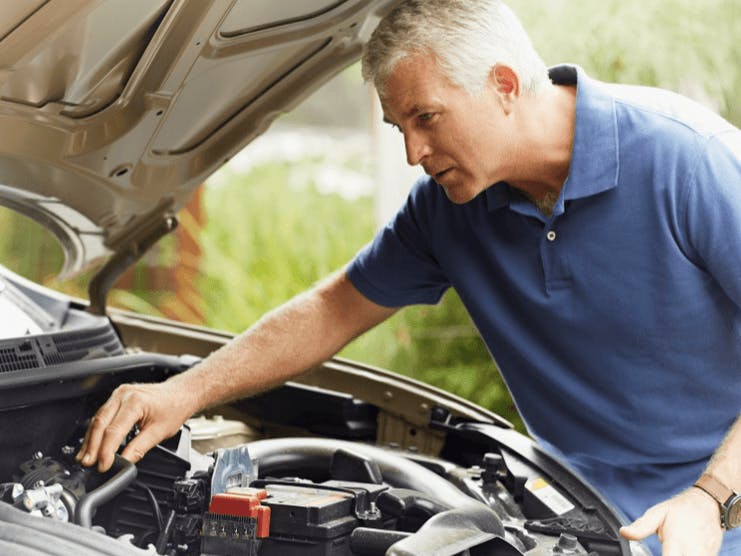
How to keep your old car on the road until the prices of newer models come back down.
You expect sticker shock when you buy a new car. But in the past year, even the price of used cars has soared more than 27%. That’s according to the Manheim Used Vehicle Value Index, the industry’s source for trends in wholesale prices of used cars and vans.
For instance, a 2019 Toyota Corolla would have set you back roughly $12,000 in 2020. This year, you’ll spend about $18,000. Prices like that are tough to swing when you’re on a fixed income — or close enough to retiring that you want to save, not spend.
So how can you cut back on auto expenses and keep the car you have now — at least until inflation winds down? We talked to John Paul, AAA Northeast’s Car Doctor, about the best ways to do just that.
Car Doctor Tip #1: Act quickly when you hear something weird
“It’s always cheaper to repair something in a preventive way than it is to wait for it to fail,” says Paul, who also writes automotive columns for several outlets, including Boston.com.
Say your brakes squeak but you put off taking the car to the mechanic. “Eventually they’ll get to a point where you need more than just brake pad replacements. You’ll need brake rotors and brake calipers, and that brake job that might have been a couple hundred dollars suddenly becomes $600 or $700 or more,” Paul explains.
Even if the noise doesn’t happen all the time, jot it down in a notebook. This way, you can remember what happened. (“I started the car and it made a sound on Monday morning when it was cold.”)
Car Doctor Tip #2: Take your car for regular checkups
You see the doctor every year for your annual physical. Turns out your car isn’t so different.
A mechanic can evaluate your car once a year and let you know what repairs need to be done now and what can wait, notes Paul. It’s another key to preventive maintenance.
Note that this yearly checkup isn’t the same thing as getting your car inspected. “That’s a safety and emissions inspection,” Paul explains. An inspection doesn’t include a look at everything that might need to be fixed.
Car Doctor Tip #3: Try to avoid dealer repairs
Unless your car is still under warranty, find a trustworthy local mechanic rather than going to the dealer’s shop, suggests Paul. “Studies show that, typically, independent repair shops are anywhere from 15% to 30% cheaper than going to a dealership,” he says.
(Speaking of saving money, here are 4 DIY projects that can increase the value of your home.)
Car Doctor Tip #4: Check the tire pressure once a month
Tires age. And they need to be replaced every 6 to 10 years or “they will dry-rot, crack, and cause all kinds of problems,” says Paul. That’s true even if they look okay. “Tires that are getting old can perform poorly, lose air, and in the worst case, blow out and even cause a crash.”
To check your tires, stick a quarter into the tire tread. “If the tread doesn’t come up to at least Washington’s head, it’s time to think about new tires on your car,” Paul advises.
Car Doctor Tip #5: Crack open the owner’s manual
“The owner’s manual is written by the people who designed the car, and they’re the ones who recommend the maintenance schedule,” explains Paul.
Sometimes a mechanic might suggest flushing out the fluids in your car or changing the spark plugs at 50,000 miles. That’s where the owner’s manual comes in. “If the people that built the car say it’s 100,000, save your money and do it at 100,000 miles,” he says.
Car Doctor Tip #6: Look under the hood
Usually, you can get away with changing the oil every year or every 10,000 miles (check your owner’s manual). But you don’t want to let the oil get so low that there’s none left in the engine when it’s time for a change.
That’s why you need to pop open the hood to check the oil levels. If you don’t already know how, ask a mechanic to show you.
Paul adds that there are other vitals you may want to pay attention to under the hood, too. These include the coolant level (antifreeze), windshield washer fluid, power steering and brake fluid, and automatic transmission fluid. Your owner’s manual can be a helpful guide here.
Car Doctor Tip #7: Buy your own parts (if possible)
Sometimes you can save a bit of money on repairs by buying the parts online yourself and just paying the mechanic to install them, Paul says. But check with the mechanic to see if they’re okay with that arrangement first. (They may say no.)
Just keep in mind the shipping costs. Even if the part is cheaper, “if it costs you $35 or $40 to mail it, then all of a sudden there goes the cost savings,” warns Paul.
Car Doctor Tip #8: Let students work on the car
If you’re a two-car family and have a lot of patience, the local vocational school or high school may be able to fix your car. “Provided you live in the school district, a lot of times they’ll repair it for crazy cheap labor rates and basically just whatever the price of the parts is,” says Paul.
Just remember: A three-hour job at your local mechanic may turn into a two-week long job at a school.
Car Doctor Tip #9: Get a second opinion
Say your mechanic hands you a long list of repairs. “Get a second opinion if it doesn’t feel right,” says Paul.
If another mechanic validates the concerns of the first, you’ll feel better about making the financial commitment. If not, it’s a chance to determine what your car actually needs or to find a better deal. Who knows, you may end up finding a shop you trust more.
Car Doctor Tip #10: Save money on gas
With gas prices so high, you’ll also want Paul’s tips on how to conserve fuel.
- Go easy on the brakes. “Whenever you need to stop aggressively, that means you’ve wasted energy that it took to get you up to that speed,” Paul notes.
- Combine errands. Yes, you’ve heard it before. But making one trip instead of several can lower the number of miles you drive in a week, saving you gas money.
- Use the most economical car for errands, commutes, or longer trips. If you’re a two-car family, be choosy about which one you take on routine trips. “In our household, we have a small SUV and a Volkswagen. The Volkswagen gets about four more miles per gallon than the SUV does, so provided I’m not going to Home Depot, it makes more sense to drive the Volkswagen because it gets better gas mileage,” says Paul.
- Declutter your trunk. “If you’re using the trunk as a storage locker, the extra weight translates into wasted fuel,” says Paul.
- Skip the premium-grade gas. If your car doesn’t require it, the extra expense probably isn’t necessary, says Paul. If the car owner’s manual says premium fuel is recommended, it’s just that — a recommendation.
- Keep your tires properly inflated. Make sure your tires are full of air — that can help maximize fuel economy, notes Paul. You’ll find the recommended pressure (denoted as psi, for “pounds per square inch”) on a sticker inside the driver’s door or in the owner’s manual. (Note that the pressure on the outside of the tire is the maximum pressure, not the recommended pressure.)
So, when do you know it’s time to trade in your old car for a newer model? The old rule of thumb was that if the cost of repairs was equal to or higher than 50% of the value of the car, it was probably time for an upgrade.
But that was then. “If your car is structurally sound — it hasn’t rusted away, and the other parts of the car are more or less mechanically sound — putting $4,000 into a $6,000 car might give you another year or two in the life of that car,” says Paul.
Hopefully, by then used car prices will have settled down. Plus, there’s something to be said for keeping around a car that you trust and that your mechanic knows well.
Related reading: 7 Money Management Tips from Early Retirees
Additional Resources
Manheim 2021 market report
External Website Link


